Watched April 30 - May 6, 2007
Takekurabe / Growing Up / literally Comparing Heights (Heinosuke Gosho, 1955)
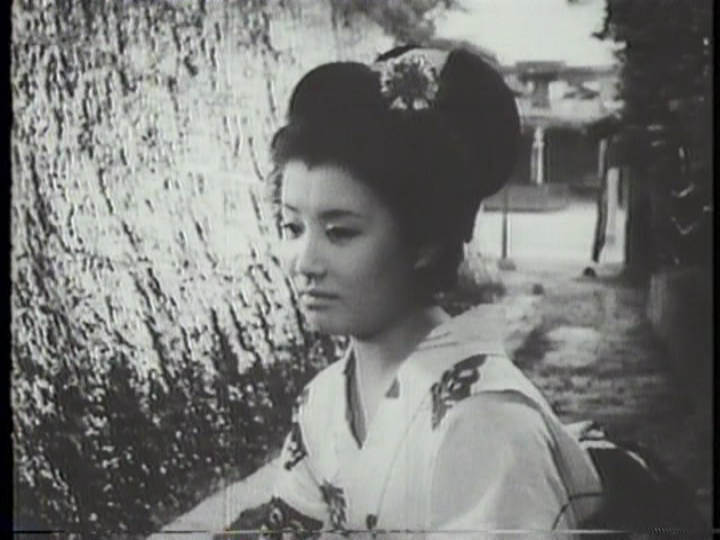 Based on a story by Ichiyo HIGUCHI -- who also wrote the stories that were the source of Imai's Nigorie (reviewed last week). As it turns out, Higuchi was Japan's first modern woman author, describing life at the low end of the social spectrum during the 1890s (which was when she wrote). Higuchi grew up in a wealthy samurai family, but her life changed drastically when her father's business went bankrupt, and her older brother and father died.
Based on a story by Ichiyo HIGUCHI -- who also wrote the stories that were the source of Imai's Nigorie (reviewed last week). As it turns out, Higuchi was Japan's first modern woman author, describing life at the low end of the social spectrum during the 1890s (which was when she wrote). Higuchi grew up in a wealthy samurai family, but her life changed drastically when her father's business went bankrupt, and her older brother and father died. 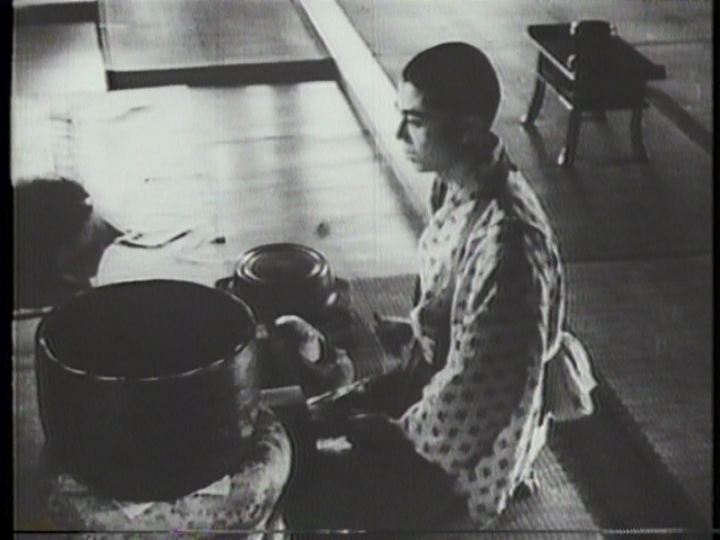 After her father's death, the family had to support itself by doing laundry and mending clothes -- until Higuchi took up writing at age 20 (inspired by a school friend who made money when she won a writing contest). She was an almost immediate success -- and wrote furiously -- until her death due to tuberculosis just 4 years later. Her fame is such that she was the third Japanese woman to be honored by being depicted on Japanese currency.
After her father's death, the family had to support itself by doing laundry and mending clothes -- until Higuchi took up writing at age 20 (inspired by a school friend who made money when she won a writing contest). She was an almost immediate success -- and wrote furiously -- until her death due to tuberculosis just 4 years later. Her fame is such that she was the third Japanese woman to be honored by being depicted on Japanese currency.
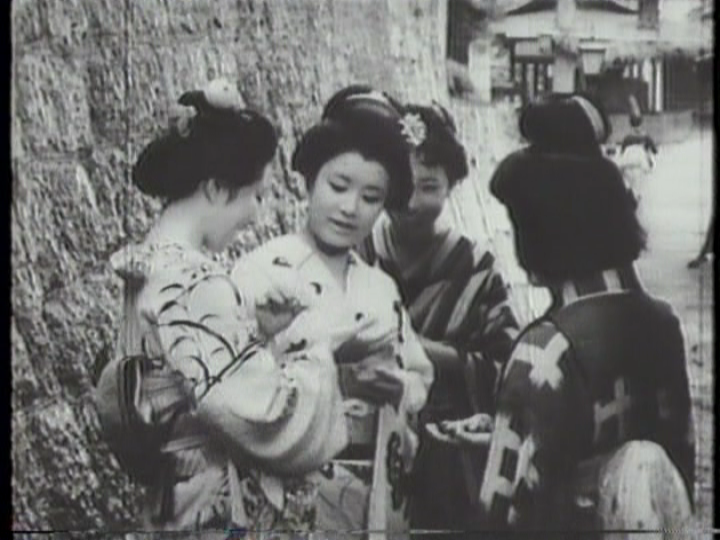 The story here is about boys and girls on the boundary between childhood and adulthood, living in Yoshiwara (a famed red light district of Tokyo). The focus here is on a young woman (Hibari Musora, famed child singing star -- and future action movie star) already contracted to become an oiran (a sort of especially high-class prostitute) and her neighbor, a young man destined to become a Buddhist priest. Mixed into the story, rival youth gangs and various older women, all of whose lives have been affected (directly or indirectly) by prostitution (actual and virtual).
The story here is about boys and girls on the boundary between childhood and adulthood, living in Yoshiwara (a famed red light district of Tokyo). The focus here is on a young woman (Hibari Musora, famed child singing star -- and future action movie star) already contracted to become an oiran (a sort of especially high-class prostitute) and her neighbor, a young man destined to become a Buddhist priest. Mixed into the story, rival youth gangs and various older women, all of whose lives have been affected (directly or indirectly) by prostitution (actual and virtual).
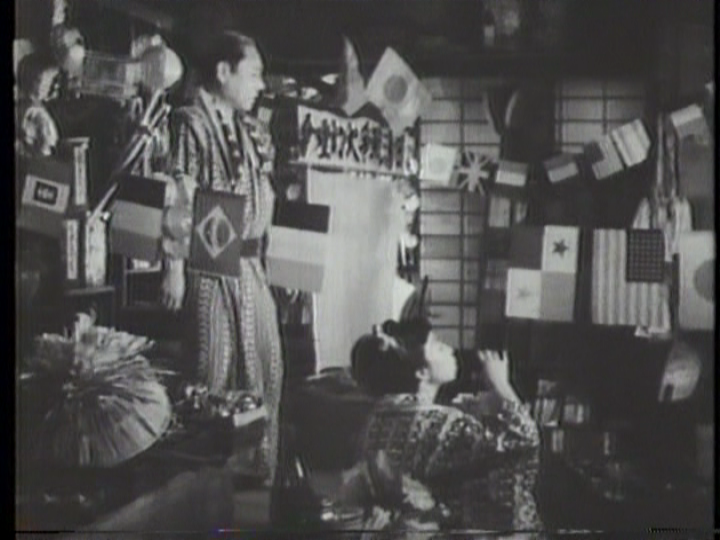 A powerful story, with a good adult cast -- that doesn't work quite as well as a film as it could have. Gosho does not have a purely "photographic eye" (unlike Imai), but rather is more of an "illustrator". His shots sometimes lack visual clarity -- and he over-complicates the plot (rather than simplifying it). Another problem here -- while the younger characters should be 12 to 13 years old, most were played by late teens (or older) -- possibly given the content, using children of the proper age would not have been possible. Nonetheless, this gives the film a sort of veil of unreality.
A powerful story, with a good adult cast -- that doesn't work quite as well as a film as it could have. Gosho does not have a purely "photographic eye" (unlike Imai), but rather is more of an "illustrator". His shots sometimes lack visual clarity -- and he over-complicates the plot (rather than simplifying it). Another problem here -- while the younger characters should be 12 to 13 years old, most were played by late teens (or older) -- possibly given the content, using children of the proper age would not have been possible. Nonetheless, this gives the film a sort of veil of unreality.
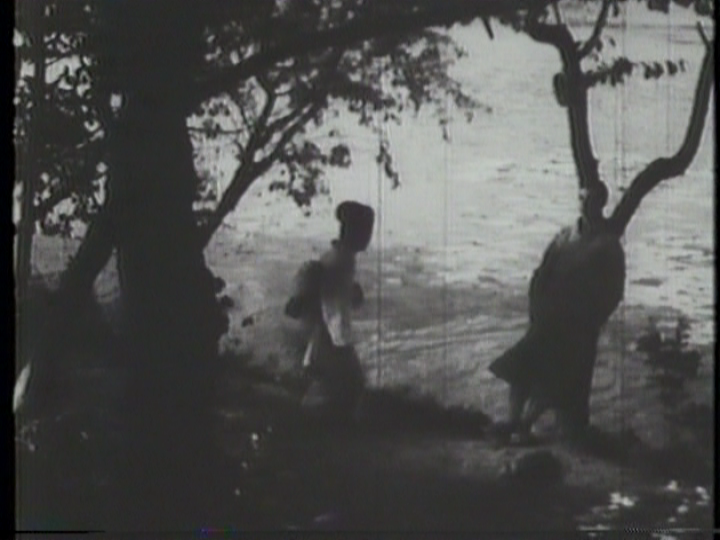 I usually find Gosho a little bit frustrating when he is presenting a story he considers important (curiously, when presenting "fluff", he is more often delightful). But his films almost always afford sufficient pleasures to reward watching (and even re-watching).
I usually find Gosho a little bit frustrating when he is presenting a story he considers important (curiously, when presenting "fluff", he is more often delightful). But his films almost always afford sufficient pleasures to reward watching (and even re-watching).
More pictures:
http://i9.photobucket.com/albums/a59/mkerpan/takekurabe/growing01.png
http://i9.photobucket.com/albums/a59/mkerpan/takekurabe/growing04.png
http://i9.photobucket.com/albums/a59/mkerpan/takekurabe/growing05.png
http://i9.photobucket.com/albums/a59/mkerpan/takekurabe/growing06.png
http://i9.photobucket.com/albums/a59/mkerpan/takekurabe/growing08.png
http://i9.photobucket.com/albums/a59/mkerpan/takekurabe/growing11.png
http://i9.photobucket.com/albums/a59/mkerpan/takekurabe/growing12.png
http://i9.photobucket.com/albums/a59/mkerpan/takekurabe/growing13.png
http://i9.photobucket.com/albums/a59/mkerpan/takekurabe/growing14.png
http://i9.photobucket.com/albums/a59/mkerpan/takekurabe/growing15.png
http://i9.photobucket.com/albums/a59/mkerpan/takekurabe/growing16.png
http://i9.photobucket.com/albums/a59/mkerpan/takekurabe/growing17.png
http://i9.photobucket.com/albums/a59/mkerpan/takekurabe/growing18.png
http://i9.photobucket.com/albums/a59/mkerpan/takekurabe/growing19.png
http://i9.photobucket.com/albums/a59/mkerpan/takekurabe/growing20.png
Strawberry Shortcakes (Hotoshi Yazaki, 2006)
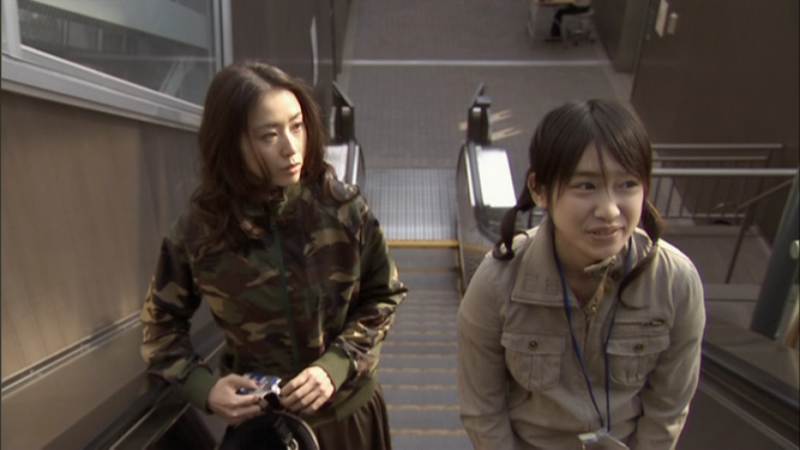 This focuses on two pair of young women. A glamorous 20-something prostitute (Yuko Nakamura) who has a drab-looking alter ego that she reserves for visits with an old school buddy
This focuses on two pair of young women. A glamorous 20-something prostitute (Yuko Nakamura) who has a drab-looking alter ego that she reserves for visits with an old school buddy 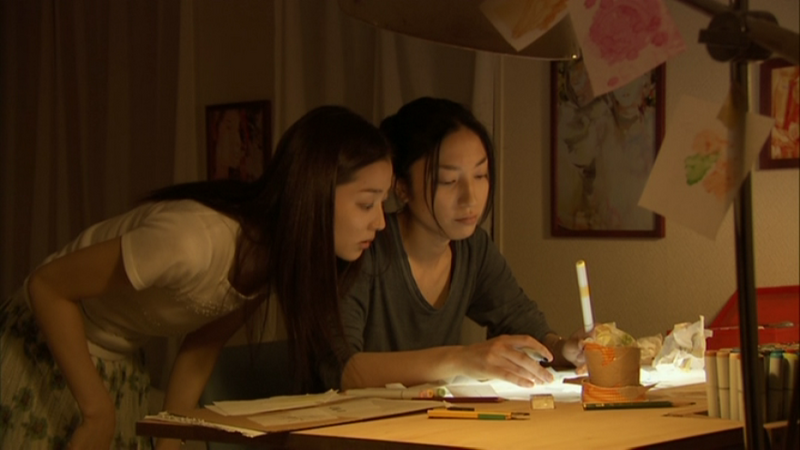 (an under-employed architecture school graduate) and the young receptionist (Chizure Ikewaki -- one of Japan's finest and quirkiest young actresses) at the prostitution agency she works for. The other pair is a couple of room mates -- a painter and illustrator (played by Kiriko Nananan --
(an under-employed architecture school graduate) and the young receptionist (Chizure Ikewaki -- one of Japan's finest and quirkiest young actresses) at the prostitution agency she works for. The other pair is a couple of room mates -- a painter and illustrator (played by Kiriko Nananan -- 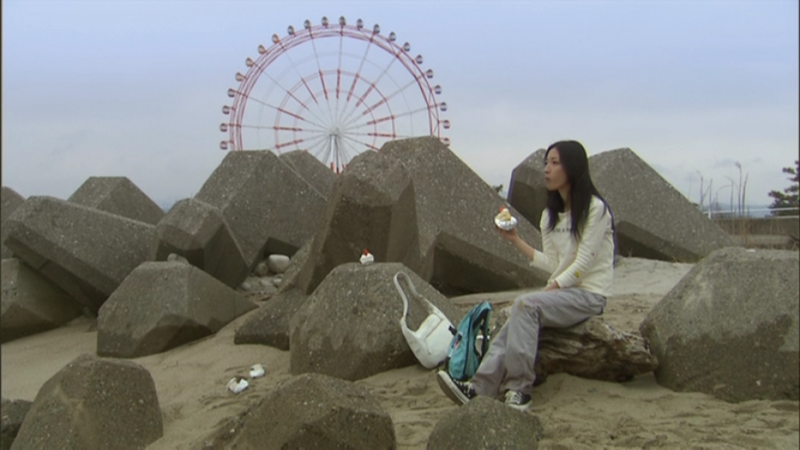 who wrote the underlying manga) and a somewhat hapless young "office lady" (Noriko Nagagoshi), who is besotted with a young (handsome but utterly jerky) businessman. Often interesting, but sometimes betraying its manga roots (some aspects of this seem just a bit too improbable). Good -- but I doubt this will ever cross the ocean.
who wrote the underlying manga) and a somewhat hapless young "office lady" (Noriko Nagagoshi), who is besotted with a young (handsome but utterly jerky) businessman. Often interesting, but sometimes betraying its manga roots (some aspects of this seem just a bit too improbable). Good -- but I doubt this will ever cross the ocean.
More screen shots:
http://i9.photobucket.com/albums/a59/mkerpan/strawberry/shortcake01.png
http://i9.photobucket.com/albums/a59/mkerpan/strawberry/shortcake02.png
http://i9.photobucket.com/albums/a59/mkerpan/strawberry/shortcake05.png
http://i9.photobucket.com/albums/a59/mkerpan/strawberry/shortcake06.png
http://i9.photobucket.com/albums/a59/mkerpan/strawberry/shortcake07.png
http://i9.photobucket.com/albums/a59/mkerpan/strawberry/shortcake08.png
http://i9.photobucket.com/albums/a59/mkerpan/strawberry/shortcake09.png
http://i9.photobucket.com/albums/a59/mkerpan/strawberry/shortcake11.png
Pavillion sanshouo / The Pavillion Salamandre (Masanori Tominaga, 2006)
 A light-hearted (much of the time -- but not always) film that is almost impossible to categorize. Doubtless there is more than a little influence from Kiyoshi Kurosawa -- in the weirdness of the plot here. Three sisters along with their half-sister, a
A light-hearted (much of the time -- but not always) film that is almost impossible to categorize. Doubtless there is more than a little influence from Kiyoshi Kurosawa -- in the weirdness of the plot here. Three sisters along with their half-sister, a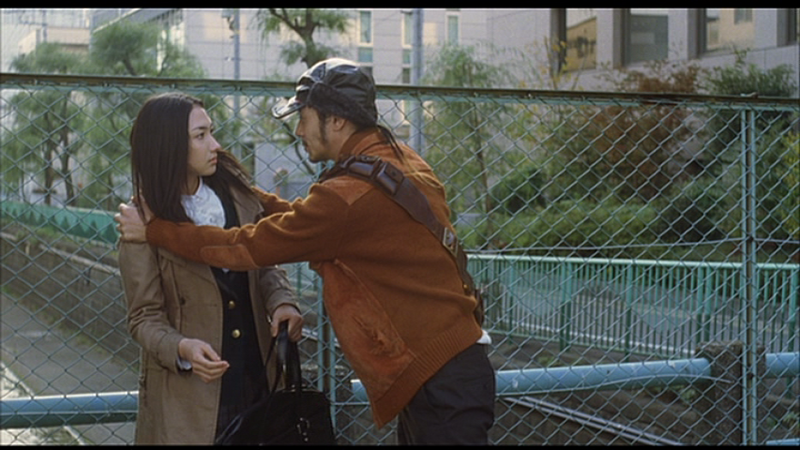 re entrusted with the care of a venerable (150+ years old) and rather large salamander -- considered to be a national treasure (in part because it appeared at the 1867 Paris Exposition). The father has been banished from running the well-heeled foundation that protects the salamander -- for reasons unspecified.
re entrusted with the care of a venerable (150+ years old) and rather large salamander -- considered to be a national treasure (in part because it appeared at the 1867 Paris Exposition). The father has been banished from running the well-heeled foundation that protects the salamander -- for reasons unspecified. 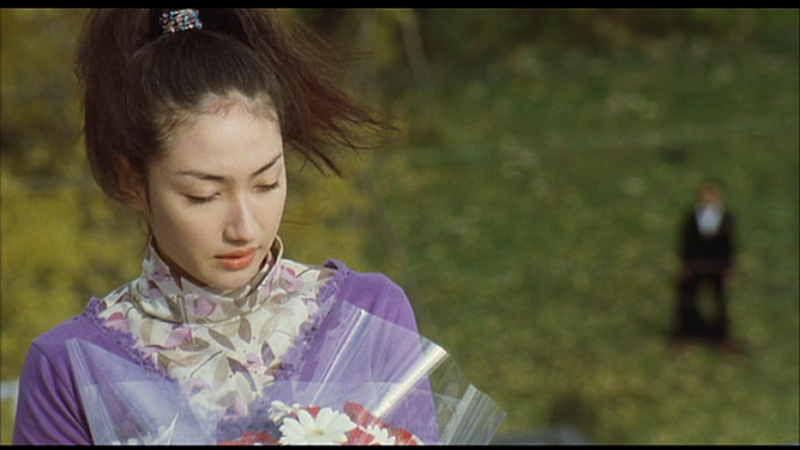 A gangster wants to marry the eldest daughter -- but first wants our hero (Jo Odagiri -- as an x-ray expert) to prove the salamander is the real deal. The father, having heard rumors of the planned mob takeover attempt, convinces the youngest girl (the step-sister -- played by Yu Kashii) to abduct the salamander for its own good. Kashii and her salamander wind up -- for a while -- in Odagiri's hometown -- a quasi-Sicilian enclave where the residents speak a weird polyglot dialect. Don't ask for explanations -- just sit back and enjoy the ride.
A gangster wants to marry the eldest daughter -- but first wants our hero (Jo Odagiri -- as an x-ray expert) to prove the salamander is the real deal. The father, having heard rumors of the planned mob takeover attempt, convinces the youngest girl (the step-sister -- played by Yu Kashii) to abduct the salamander for its own good. Kashii and her salamander wind up -- for a while -- in Odagiri's hometown -- a quasi-Sicilian enclave where the residents speak a weird polyglot dialect. Don't ask for explanations -- just sit back and enjoy the ride.
A few more shots:
http://i9.photobucket.com/albums/a59/mkerpan/pavillion/salamander00.png
http://i9.photobucket.com/albums/a59/mkerpan/pavillion/salamander01.png
http://i9.photobucket.com/albums/a59/mkerpan/pavillion/salamander03.png
http://i9.photobucket.com/albums/a59/mkerpan/pavillion/salamander05.png
http://i9.photobucket.com/albums/a59/mkerpan/pavillion/salamander06.png
http://i9.photobucket.com/albums/a59/mkerpan/pavillion/salamander08.png
Toki wo kakeru shôjo / the Girl Who Leapt Through Time (Mamoru Hosoda, 2006)
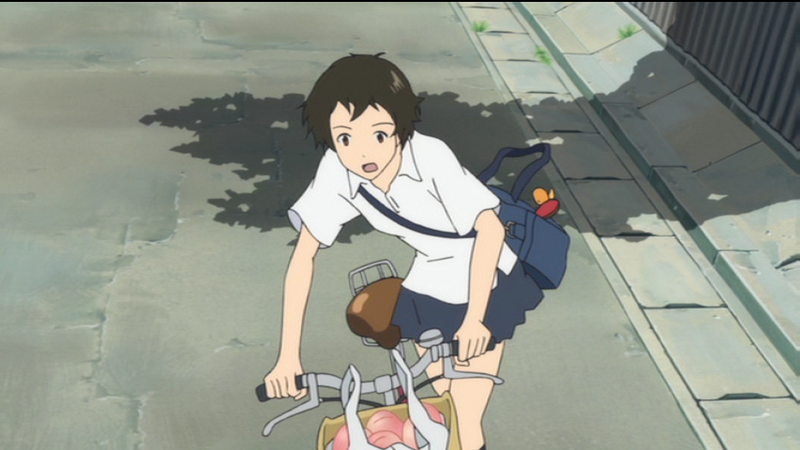 The Japanese DVD of this is out -- and sub-less. Nonetheless, the visual presentation is so clear here that a synopsis would probably get most people through any rough spots. My wife and I saw this screened (or rather projected from a DVD) with subtitles a while back -- so we could fill the younger members of our audience in.
The Japanese DVD of this is out -- and sub-less. Nonetheless, the visual presentation is so clear here that a synopsis would probably get most people through any rough spots. My wife and I saw this screened (or rather projected from a DVD) with subtitles a while back -- so we could fill the younger members of our audience in.
 An updating of a popular children's fantasy story (previous versions include a live-action film from the 80s), this concerns a girl who discovers (when facing a genuine disaster) that she has somehow become able to leap (literally) back in time. At first she uses this skill for mundane corrections (getting home earlier --
An updating of a popular children's fantasy story (previous versions include a live-action film from the 80s), this concerns a girl who discovers (when facing a genuine disaster) that she has somehow become able to leap (literally) back in time. At first she uses this skill for mundane corrections (getting home earlier -- 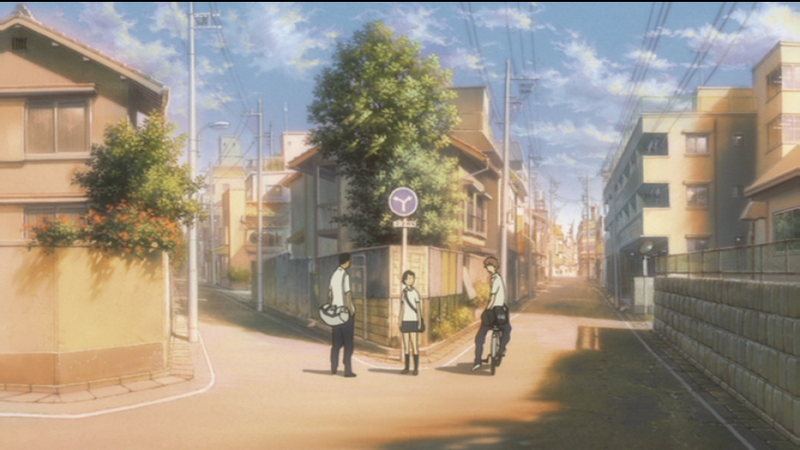 so her little sister doesn't gobble up her pudding cup first -- and staying awake during an unexpected pop quiz). Then she uses it to try to fix various romantic problems (hers and others). From time to time (or actually -- mostly at the same time -- though on different time streams), she meets with her aunt (who never seems to be at a loss -- and always seems to be able to keep track of what's happening).
so her little sister doesn't gobble up her pudding cup first -- and staying awake during an unexpected pop quiz). Then she uses it to try to fix various romantic problems (hers and others). From time to time (or actually -- mostly at the same time -- though on different time streams), she meets with her aunt (who never seems to be at a loss -- and always seems to be able to keep track of what's happening). 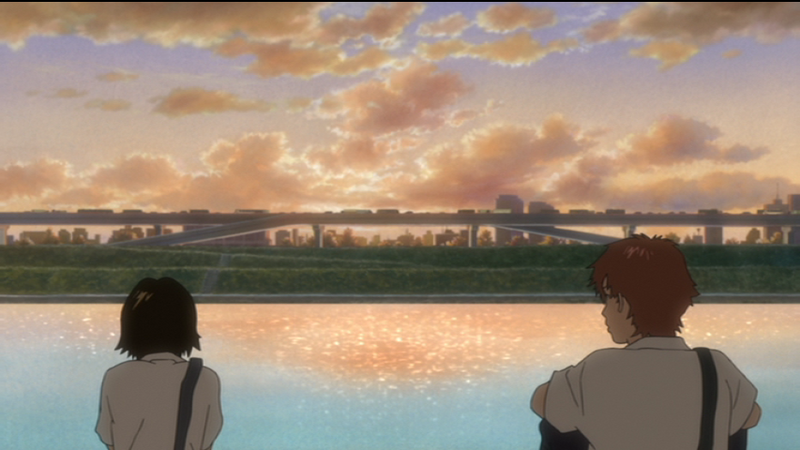 Hosoda was originally hired to direct "Howl's Moving Castle" -- and then fired by Miyazaki. Nonetheless, he shows signs of being a legitimate (artistic) heir to the other Ghibli founder, Isao Takahata. I hope a US release (theatrical -- followed by DVD) will happen sooner than later.
Hosoda was originally hired to direct "Howl's Moving Castle" -- and then fired by Miyazaki. Nonetheless, he shows signs of being a legitimate (artistic) heir to the other Ghibli founder, Isao Takahata. I hope a US release (theatrical -- followed by DVD) will happen sooner than later.
More screen shots:
http://i9.photobucket.com/albums/a59/mkerpan/girl_who_leapt/girl02.png
http://i9.photobucket.com/albums/a59/mkerpan/girl_who_leapt/girl04.png
http://i9.photobucket.com/albums/a59/mkerpan/girl_who_leapt/girl06.png
http://i9.photobucket.com/albums/a59/mkerpan/girl_who_leapt/girl08.png
 Based on a story by Ichiyo HIGUCHI -- who also wrote the stories that were the source of Imai's Nigorie (reviewed last week). As it turns out, Higuchi was Japan's first modern woman author, describing life at the low end of the social spectrum during the 1890s (which was when she wrote). Higuchi grew up in a wealthy samurai family, but her life changed drastically when her father's business went bankrupt, and her older brother and father died.
Based on a story by Ichiyo HIGUCHI -- who also wrote the stories that were the source of Imai's Nigorie (reviewed last week). As it turns out, Higuchi was Japan's first modern woman author, describing life at the low end of the social spectrum during the 1890s (which was when she wrote). Higuchi grew up in a wealthy samurai family, but her life changed drastically when her father's business went bankrupt, and her older brother and father died.  After her father's death, the family had to support itself by doing laundry and mending clothes -- until Higuchi took up writing at age 20 (inspired by a school friend who made money when she won a writing contest). She was an almost immediate success -- and wrote furiously -- until her death due to tuberculosis just 4 years later. Her fame is such that she was the third Japanese woman to be honored by being depicted on Japanese currency.
After her father's death, the family had to support itself by doing laundry and mending clothes -- until Higuchi took up writing at age 20 (inspired by a school friend who made money when she won a writing contest). She was an almost immediate success -- and wrote furiously -- until her death due to tuberculosis just 4 years later. Her fame is such that she was the third Japanese woman to be honored by being depicted on Japanese currency. The story here is about boys and girls on the boundary between childhood and adulthood, living in Yoshiwara (a famed red light district of Tokyo). The focus here is on a young woman (Hibari Musora, famed child singing star -- and future action movie star) already contracted to become an oiran (a sort of especially high-class prostitute) and her neighbor, a young man destined to become a Buddhist priest. Mixed into the story, rival youth gangs and various older women, all of whose lives have been affected (directly or indirectly) by prostitution (actual and virtual).
The story here is about boys and girls on the boundary between childhood and adulthood, living in Yoshiwara (a famed red light district of Tokyo). The focus here is on a young woman (Hibari Musora, famed child singing star -- and future action movie star) already contracted to become an oiran (a sort of especially high-class prostitute) and her neighbor, a young man destined to become a Buddhist priest. Mixed into the story, rival youth gangs and various older women, all of whose lives have been affected (directly or indirectly) by prostitution (actual and virtual). A powerful story, with a good adult cast -- that doesn't work quite as well as a film as it could have. Gosho does not have a purely "photographic eye" (unlike Imai), but rather is more of an "illustrator". His shots sometimes lack visual clarity -- and he over-complicates the plot (rather than simplifying it). Another problem here -- while the younger characters should be 12 to 13 years old, most were played by late teens (or older) -- possibly given the content, using children of the proper age would not have been possible. Nonetheless, this gives the film a sort of veil of unreality.
A powerful story, with a good adult cast -- that doesn't work quite as well as a film as it could have. Gosho does not have a purely "photographic eye" (unlike Imai), but rather is more of an "illustrator". His shots sometimes lack visual clarity -- and he over-complicates the plot (rather than simplifying it). Another problem here -- while the younger characters should be 12 to 13 years old, most were played by late teens (or older) -- possibly given the content, using children of the proper age would not have been possible. Nonetheless, this gives the film a sort of veil of unreality. I usually find Gosho a little bit frustrating when he is presenting a story he considers important (curiously, when presenting "fluff", he is more often delightful). But his films almost always afford sufficient pleasures to reward watching (and even re-watching).
I usually find Gosho a little bit frustrating when he is presenting a story he considers important (curiously, when presenting "fluff", he is more often delightful). But his films almost always afford sufficient pleasures to reward watching (and even re-watching).More pictures:
http://i9.photobucket.com/albums/a59/mkerpan/takekurabe/growing01.png
http://i9.photobucket.com/albums/a59/mkerpan/takekurabe/growing04.png
http://i9.photobucket.com/albums/a59/mkerpan/takekurabe/growing05.png
http://i9.photobucket.com/albums/a59/mkerpan/takekurabe/growing06.png
http://i9.photobucket.com/albums/a59/mkerpan/takekurabe/growing08.png
http://i9.photobucket.com/albums/a59/mkerpan/takekurabe/growing11.png
http://i9.photobucket.com/albums/a59/mkerpan/takekurabe/growing12.png
http://i9.photobucket.com/albums/a59/mkerpan/takekurabe/growing13.png
http://i9.photobucket.com/albums/a59/mkerpan/takekurabe/growing14.png
http://i9.photobucket.com/albums/a59/mkerpan/takekurabe/growing15.png
http://i9.photobucket.com/albums/a59/mkerpan/takekurabe/growing16.png
http://i9.photobucket.com/albums/a59/mkerpan/takekurabe/growing17.png
http://i9.photobucket.com/albums/a59/mkerpan/takekurabe/growing18.png
http://i9.photobucket.com/albums/a59/mkerpan/takekurabe/growing19.png
http://i9.photobucket.com/albums/a59/mkerpan/takekurabe/growing20.png
Strawberry Shortcakes (Hotoshi Yazaki, 2006)
 This focuses on two pair of young women. A glamorous 20-something prostitute (Yuko Nakamura) who has a drab-looking alter ego that she reserves for visits with an old school buddy
This focuses on two pair of young women. A glamorous 20-something prostitute (Yuko Nakamura) who has a drab-looking alter ego that she reserves for visits with an old school buddy  (an under-employed architecture school graduate) and the young receptionist (Chizure Ikewaki -- one of Japan's finest and quirkiest young actresses) at the prostitution agency she works for. The other pair is a couple of room mates -- a painter and illustrator (played by Kiriko Nananan --
(an under-employed architecture school graduate) and the young receptionist (Chizure Ikewaki -- one of Japan's finest and quirkiest young actresses) at the prostitution agency she works for. The other pair is a couple of room mates -- a painter and illustrator (played by Kiriko Nananan --  who wrote the underlying manga) and a somewhat hapless young "office lady" (Noriko Nagagoshi), who is besotted with a young (handsome but utterly jerky) businessman. Often interesting, but sometimes betraying its manga roots (some aspects of this seem just a bit too improbable). Good -- but I doubt this will ever cross the ocean.
who wrote the underlying manga) and a somewhat hapless young "office lady" (Noriko Nagagoshi), who is besotted with a young (handsome but utterly jerky) businessman. Often interesting, but sometimes betraying its manga roots (some aspects of this seem just a bit too improbable). Good -- but I doubt this will ever cross the ocean.More screen shots:
http://i9.photobucket.com/albums/a59/mkerpan/strawberry/shortcake01.png
http://i9.photobucket.com/albums/a59/mkerpan/strawberry/shortcake02.png
http://i9.photobucket.com/albums/a59/mkerpan/strawberry/shortcake05.png
http://i9.photobucket.com/albums/a59/mkerpan/strawberry/shortcake06.png
http://i9.photobucket.com/albums/a59/mkerpan/strawberry/shortcake07.png
http://i9.photobucket.com/albums/a59/mkerpan/strawberry/shortcake08.png
http://i9.photobucket.com/albums/a59/mkerpan/strawberry/shortcake09.png
http://i9.photobucket.com/albums/a59/mkerpan/strawberry/shortcake11.png
Pavillion sanshouo / The Pavillion Salamandre (Masanori Tominaga, 2006)
 A light-hearted (much of the time -- but not always) film that is almost impossible to categorize. Doubtless there is more than a little influence from Kiyoshi Kurosawa -- in the weirdness of the plot here. Three sisters along with their half-sister, a
A light-hearted (much of the time -- but not always) film that is almost impossible to categorize. Doubtless there is more than a little influence from Kiyoshi Kurosawa -- in the weirdness of the plot here. Three sisters along with their half-sister, a re entrusted with the care of a venerable (150+ years old) and rather large salamander -- considered to be a national treasure (in part because it appeared at the 1867 Paris Exposition). The father has been banished from running the well-heeled foundation that protects the salamander -- for reasons unspecified.
re entrusted with the care of a venerable (150+ years old) and rather large salamander -- considered to be a national treasure (in part because it appeared at the 1867 Paris Exposition). The father has been banished from running the well-heeled foundation that protects the salamander -- for reasons unspecified.  A gangster wants to marry the eldest daughter -- but first wants our hero (Jo Odagiri -- as an x-ray expert) to prove the salamander is the real deal. The father, having heard rumors of the planned mob takeover attempt, convinces the youngest girl (the step-sister -- played by Yu Kashii) to abduct the salamander for its own good. Kashii and her salamander wind up -- for a while -- in Odagiri's hometown -- a quasi-Sicilian enclave where the residents speak a weird polyglot dialect. Don't ask for explanations -- just sit back and enjoy the ride.
A gangster wants to marry the eldest daughter -- but first wants our hero (Jo Odagiri -- as an x-ray expert) to prove the salamander is the real deal. The father, having heard rumors of the planned mob takeover attempt, convinces the youngest girl (the step-sister -- played by Yu Kashii) to abduct the salamander for its own good. Kashii and her salamander wind up -- for a while -- in Odagiri's hometown -- a quasi-Sicilian enclave where the residents speak a weird polyglot dialect. Don't ask for explanations -- just sit back and enjoy the ride.A few more shots:
http://i9.photobucket.com/albums/a59/mkerpan/pavillion/salamander00.png
http://i9.photobucket.com/albums/a59/mkerpan/pavillion/salamander01.png
http://i9.photobucket.com/albums/a59/mkerpan/pavillion/salamander03.png
http://i9.photobucket.com/albums/a59/mkerpan/pavillion/salamander05.png
http://i9.photobucket.com/albums/a59/mkerpan/pavillion/salamander06.png
http://i9.photobucket.com/albums/a59/mkerpan/pavillion/salamander08.png
Toki wo kakeru shôjo / the Girl Who Leapt Through Time (Mamoru Hosoda, 2006)
 The Japanese DVD of this is out -- and sub-less. Nonetheless, the visual presentation is so clear here that a synopsis would probably get most people through any rough spots. My wife and I saw this screened (or rather projected from a DVD) with subtitles a while back -- so we could fill the younger members of our audience in.
The Japanese DVD of this is out -- and sub-less. Nonetheless, the visual presentation is so clear here that a synopsis would probably get most people through any rough spots. My wife and I saw this screened (or rather projected from a DVD) with subtitles a while back -- so we could fill the younger members of our audience in. An updating of a popular children's fantasy story (previous versions include a live-action film from the 80s), this concerns a girl who discovers (when facing a genuine disaster) that she has somehow become able to leap (literally) back in time. At first she uses this skill for mundane corrections (getting home earlier --
An updating of a popular children's fantasy story (previous versions include a live-action film from the 80s), this concerns a girl who discovers (when facing a genuine disaster) that she has somehow become able to leap (literally) back in time. At first she uses this skill for mundane corrections (getting home earlier --  so her little sister doesn't gobble up her pudding cup first -- and staying awake during an unexpected pop quiz). Then she uses it to try to fix various romantic problems (hers and others). From time to time (or actually -- mostly at the same time -- though on different time streams), she meets with her aunt (who never seems to be at a loss -- and always seems to be able to keep track of what's happening).
so her little sister doesn't gobble up her pudding cup first -- and staying awake during an unexpected pop quiz). Then she uses it to try to fix various romantic problems (hers and others). From time to time (or actually -- mostly at the same time -- though on different time streams), she meets with her aunt (who never seems to be at a loss -- and always seems to be able to keep track of what's happening).  Hosoda was originally hired to direct "Howl's Moving Castle" -- and then fired by Miyazaki. Nonetheless, he shows signs of being a legitimate (artistic) heir to the other Ghibli founder, Isao Takahata. I hope a US release (theatrical -- followed by DVD) will happen sooner than later.
Hosoda was originally hired to direct "Howl's Moving Castle" -- and then fired by Miyazaki. Nonetheless, he shows signs of being a legitimate (artistic) heir to the other Ghibli founder, Isao Takahata. I hope a US release (theatrical -- followed by DVD) will happen sooner than later.More screen shots:
http://i9.photobucket.com/albums/a59/mkerpan/girl_who_leapt/girl02.png
http://i9.photobucket.com/albums/a59/mkerpan/girl_who_leapt/girl04.png
http://i9.photobucket.com/albums/a59/mkerpan/girl_who_leapt/girl06.png
http://i9.photobucket.com/albums/a59/mkerpan/girl_who_leapt/girl08.png